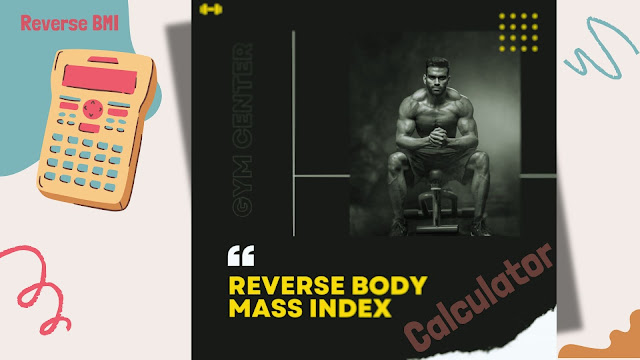Calorie Calculator: The Secret Weapon For A Healthier Lifestyle
Calorie Calculator
Instructions for Use:
Read the instructions for use remain largely the same, with the only difference being how the user selects their gender:
- Enter your age in years.
- Select your gender from the dropdown menu.
- Please input your weight and choose the unit (kg or lbs).
- Input your height and choose the unit (cm or in).
- Please select your activity level from the dropdown menu.
- Click the "Calculate" button to see your estimated daily calorie needs.
Caloric intake refers to the total number of calories a
person consumes through eating and drinking. The right amount of caloric intake
for an individual depends on several factors, including age, sex, weight,
height, and level of physical activity. Understanding calorie intake is crucial
for managing weight, supporting body functions, and promoting overall health.
Here's a brief overview of different caloric intake categories based on
activity levels and goals:
1. Maintenance
This is the amount of calories which is needed to maintain your
current weight. It represents a balance between calories consumed and calories
expended through bodily functions and physical activity. This number varies
significantly among individuals.
2. Weight Loss
To weight loss, caloric intake needs to be less than the
calories burned in a day. Creating a caloric deficit, either by consuming fewer
calories or increasing physical activity, leads to weight loss. A common
starting point is to reduce daily caloric intake by 500 to 1,000 calories to
aim for a safe weight loss of about 1 to 2 pounds per week.
3. Weight Gain
To gain weight, caloric intake must exceed the number of
calories burned. This involves consuming more calories than the body uses.
People looking to gain weight, often in the form of muscle, may increase their
caloric intake by 300 to 500 calories per day above their maintenance calories.
This category is common among those with a fast metabolism or high physical
activity level, as well as individuals looking to build muscle mass.
Caloric Needs by Physical Activity Level
- Sedentary:
This category have people who get minimal or no exercise. Their
caloric needs are based on their basal metabolic rate (BMR) plus a small
additional amount for daily activities that do not include exercise.
- Lightly
Active: Individuals in this group engage in light exercise or sports
1-3 days a week. Their caloric needs are slightly higher to account for
this activity.
- Moderately
Active: This category have people who perform moderate exercise or sports
3-5 days a week. They require more calories than those who are sedentary
or lightly active.
- Very
Active: Very active individuals are those who participate in hard exercise or sports
6-7 days a week. Their caloric requirements are significantly higher to
support this level of activity.
- Extra
Active: This category is for those people who engaged in very hard exercise or
sports and who also have a physically demanding job. Their caloric needs
are the highest to sustain their energy levels.
It's important to note that these all categories are general
guidelines. Individual caloric needs can vary based on metabolism, muscle mass,
and other health-related factors. Consulting with a healthcare provider or a
nutritionist is recommended to determine your specific caloric requirements for
achieving or maintaining a healthy weight.
Sedentary Lifestyle
- Women: Ages 19-30: ~1,800-2,000 calories; Ages 31-50: ~1,800 calories; Ages 51+: ~1,600 calories.
- Men: Ages 19-30: ~2,400-2,600 calories; Ages 31-50: ~2,200-2,400 calories; Ages 51+: ~2,000-2,200 calories.
Moderately Active Lifestyle
- Women: Ages 19-30: ~2,000-2,200 calories; Ages 31-50: ~2,000 calories; Ages 51+: ~1,800 calories.
- Men: Ages 19-30: ~2,600-2,800 calories; Ages 31-50: ~2,400-2,600 calories; Ages 51+: ~2,200-2,400 calories.
Active Lifestyle
- Women: Ages 19-30: ~2,400 calories; Ages 31-50: ~2,200 calories; Ages 51+: ~2,000-2,200 calories.
- Men: Ages 19-30: ~3,000 calories; Ages 31-50: ~2,800-3,000 calories; Ages 51+: ~2,400-2,800 calories.
Weight Loss
For weight loss, a common approach is to reduce daily caloric intake by 500-1,000 calories from your maintenance level to achieve a healthy weight loss rate of about 1-2 pounds per week. For instance, if a sedentary woman aged 31-50 needs about 1,800 calories to maintain her current weight, reducing her intake to 1,300-1,500 calories could help her lose weight.
Weight Gain
For weight gain, particularly muscle mass, adding about 300-500 calories to your daily maintenance needs can help support growth. For example, if a moderately active man aged 19-30 typically consumes 2,800 calories to maintain his weight, increasing his intake to 3,100-3,300 calories can aid in muscle building, assuming he's also engaging in strength training exercises.
Special Considerations
Pregnancy and Breastfeeding: Women who are pregnant or breastfeeding have higher calorific needs. Pregnant women generally need to add about 300-500 calories to their daily intake, depending on the trimester, while breastfeeding women may need an additional 500 calories.
Athletes: Highly active individuals or athletes may require consistently more calories to support their energy expenditure. Their needs can vary greatly depending on the intensity and duration of their training sessions.
Remember, these figures are estimates and can vary based on individual metabolic rates and other health factors. Consulting with a healthcare professional or a registered dietitian is recommended to determine personalized caloric needs.


Comments
Post a Comment
Do leave your comments.